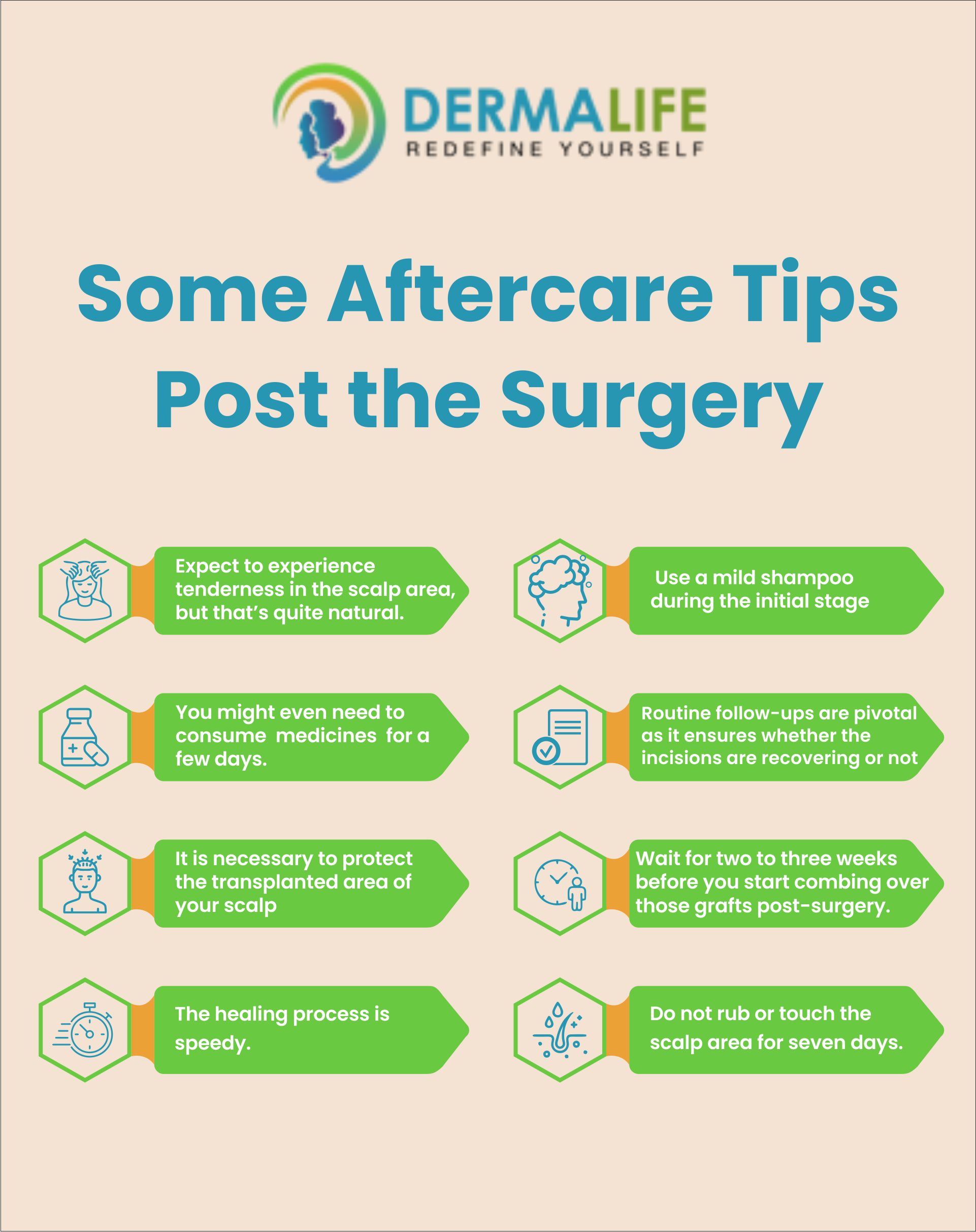Want to opt for a hair transplant in winters? Well, good hair boosts your mood. And irrespective of gender, voluminous and lustrous hair builds your personality, improving your confidence and self-esteem.
But not everyone is lucky to flaunt natural, dense hair. So, whether baldness has resulted genetically or from environmental factors, there’s a one-stop solution. That alternative option is hair transplantation. But does it sound promising to opt for a hair transplant during the winter?
Welcome to this comprehensive guide that narrates whether it’s great to opt for a hair transplant during the cold season.
Hair Transplantation – At a Glance
Almost everyone experiences hair issues like hair fall, dandruff issues, and hair thinning. But things might seem alarming and threatening in the worst cases.
Be it environmental factors like pollution, lifestyle choices, or genetic parameters, hair loss might transform one’s life negatively. Besides casting negative impacts on mental health, it may reduce your work productivity and lower self-confidence.
While some natural remedies are time-consuming, hair transplantation is a life-saving option. It’s the speediest process of alleviating and eliminating baldness or hair loss due to issues like:
- Accidents
- Trauma
- Burns
- Surgery
- Genetic factors and
- Environmental Parameters
The prime objective of this solution is to treat and restore a youthful appearance for people distressed by hair loss and baldness. The procedure encompasses consistent advancements for restoring hair. The cost of hair transplant depends on a few parameters, such as the number of grafts needed & charges levied by a clinic where this process occurs.
Technological advancements in the medical domain have led to tremendous improvement in hair transplant methodologies. Impressive results of hair transplants have already captured everyone’s attention. Today, many people facing baldness issues find this procedure an ideal treatment. Given its natural look and low expenses, it has become a popular minimally invasive surgical procedure with no side effects.
The surgical procedure focuses on replacing dormant hair follicles with invigorating ones. What it aims is to offer voluminous and natural-looking hair. But there are a few considerations before you opt for this surgical treatment. So, is it a good time to opt for hair transplantation during the cold season? Delve into the given narration to get a better understanding.
Does It Sound Good to Choose Hair Transplantation During Winters?
Choosing hair transplantation might be a significant step as it entails changing one’s overall personality. But did you ever notice that different seasons have different impacts on your body? Thus, you first need to factor in a few determinations before choosing the treatment solution.
Note that summer is a time of excessive heat. Direct heat/sunlight and dryness can damage the newly transplanted hair roots.
To protect the scalp from harmful heat, patients must include multiple precautionary steps during the healing process. Thus, opting for a hair transplant during the winter is a better idea. Deciding on a hair transplant is vital to working on personality.
A Few Perks for Hair Transplant in the Winter Season
Investing in a hair transplant is an expensive and serious commitment. And it requires a certain amount of time to determine whether to opt for the therapy. Ideally, ideal candidates who can choose this treatment usually range from 25 to 65 years of age.
You need healthy hair follicles to withstand the transplant. And the cold season allows the hair follicles to stay sweat-free. Additionally, it gives a healthier healing opportunity. Remember one thing; the body does not produce excessive heat during winter.
That is why it is ideal to opt for this treatment. Winter is a perfect time to opt for the treatment because sweating might contribute to clogged pores.
-
Allows for Discreet Healing
Winter is a season when it allows patients to recover discreetly from the transplant.
-
Reduced Risks of Sunburn
You may worry about sunburn and sweat that results in infections at that transplant site. So, it means that patients will enjoy a smoother healing phase.
-
Improves the Aesthetics
Soon after transplantation, the hair thickness & fullness will start improving. It only takes a few months for the hair to work at its best. And the winter season does wonders for hair transplant patients.
-
Keeps Sweat-Related Infections at Bay
The summer weather conditions can lead to sunburn and sweat. Sweat can contribute to severe infections that may damage the hair follicles. When you undergo hair transplantation during winter, there are reduced chances for sweat-related infections.
Before You Prepare for the Surgery: What to Expect?
Undergoing surgery will require you to follow a few parameters. Now that you are preparing for hair transplantation during the winter season, it is imperative to take a few precautionary steps into account. Read more on it in the given pointers.
- First, your surgeon will ask you to stop certain medications that may affect your health post-surgery. They include aspirin or anti-inflammatory medicines, blood thinners, herbal medicines, painkillers, and Vitamin E & B supplements.
- Smoking can have negative impacts after a hair transplant. Besides, your surgeon may ask you to refrain from consuming alcohol before and after the surgery.
- It is imperative to avoid applying any styling products before and after the surgery. They are hair gels, creams, sprays, and other styling products.
- Keep yourself stress-free before the surgery. Remember, anxiety, depression, and stress may negatively impact your hair health, damaging hair follicles.

Some Aftercare Tips Post the Surgery: What Should You Follow?
You don’t need to worry about the surgery if you follow the instructions given by the surgeon. During the surgery, the professional will take care of the tiny details. But after undergoing surgery, there are a few things you must follow. Otherwise, the whole surgical process might negatively impact your hair’s health.
- Expect to experience tenderness in the scalp area, but that’s quite natural.
- You might even need to consume medicines for a few days (they may include anti-inflammatory medicines or antibiotics).
- It is necessary to protect the transplanted area of your scalp area for a few days after the surgery.
- The healing process is speedy (it only takes around two to five days to recover, after which you can lead a regular life).
- Once you start your shampooing routine, it is better to use a mild shampoo during the initial stage.
- Routine follow-ups are pivotal as they ensure whether the incisions are recovering or not.
- Wait for two to three weeks before you start combing over those grafts post-surgery.
- Do not rub or touch the scalp area for seven days
Following these instructions will help you recover fast. But if you skip any of these aftercare practices, the healing process gradually gets slower.
Can You Achieve a Painless Surgical Process?
Local anesthesia will help you accomplish your hair goals painlessly via a surgical procedure. It is quite common to experience discomfort and pain during surgery. However local anesthesia can alleviate the discomfort during the surgery. The scalp does not sense pain signs after the local anesthesia is applied.
Assessing Baldness and Donor Area Criteria: Aspects to Learn
Assessing the baldness area is a fundamental step before undergoing a transplant. Candidates must have noticeable signs of hair loss on the front with healthy hair growth at the sides and back. Talking about the donor area, it’s a part of the head.
The surgeon takes the hair follicles from this site. Several aspects and parameters can affect the donor area’s quality in the transplant. Thus, an assessment is necessary before the surgery is initiated. So, it is imperative to evaluate the following parameters:
- Gauging of the hair follicles’ thickness
- Hair follicles’ quantity and quality
- A presence or absence of the donor area’s retrograde alopecia
Ninety days after your surgery, you will see some transplanted hair growing. It will continue for the following months. And by the end of the fifth month, patients can see their roots growing with new hair. That’s how hair transplantation proves to be a magical treatment that eliminates baldness, thereby boosting your self-confidence.
So, are you planning to opt for a hair transplant anytime shortly? Winter is the ideal time of the year, and you now know why. So, while opting for a hair transplant in winter, please follow the before and aftercare tips properly.
Related Blog – What To Eat After A Hair Transplant?- Food To Eat & Avoid





